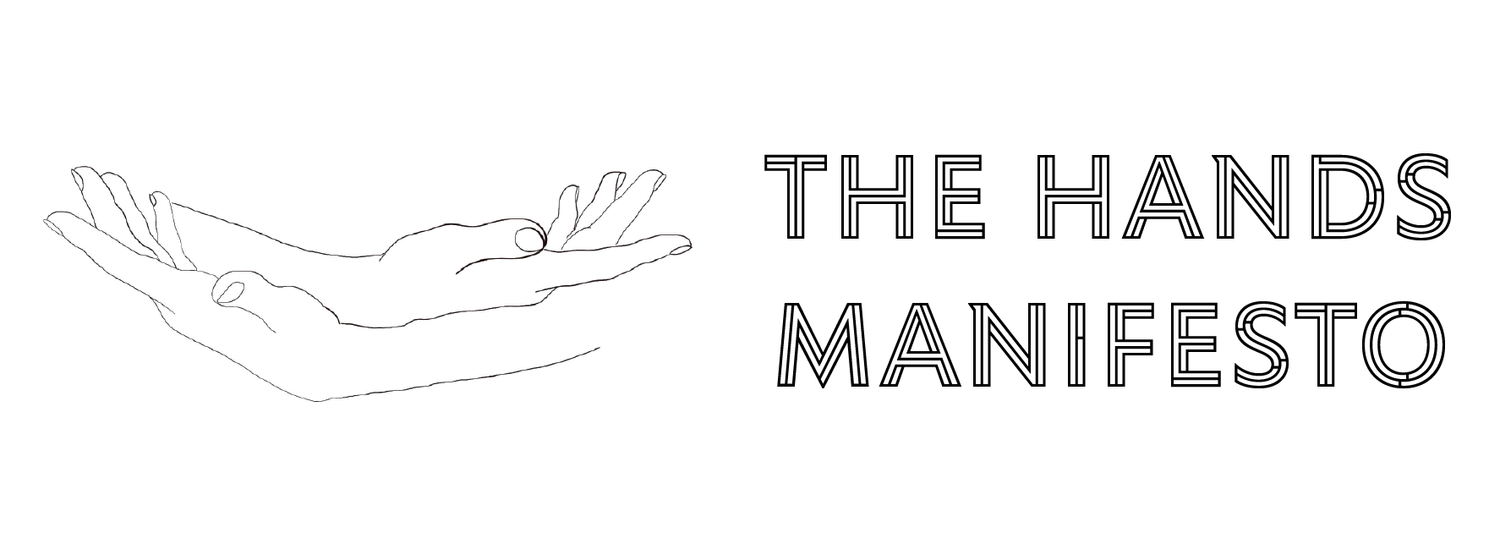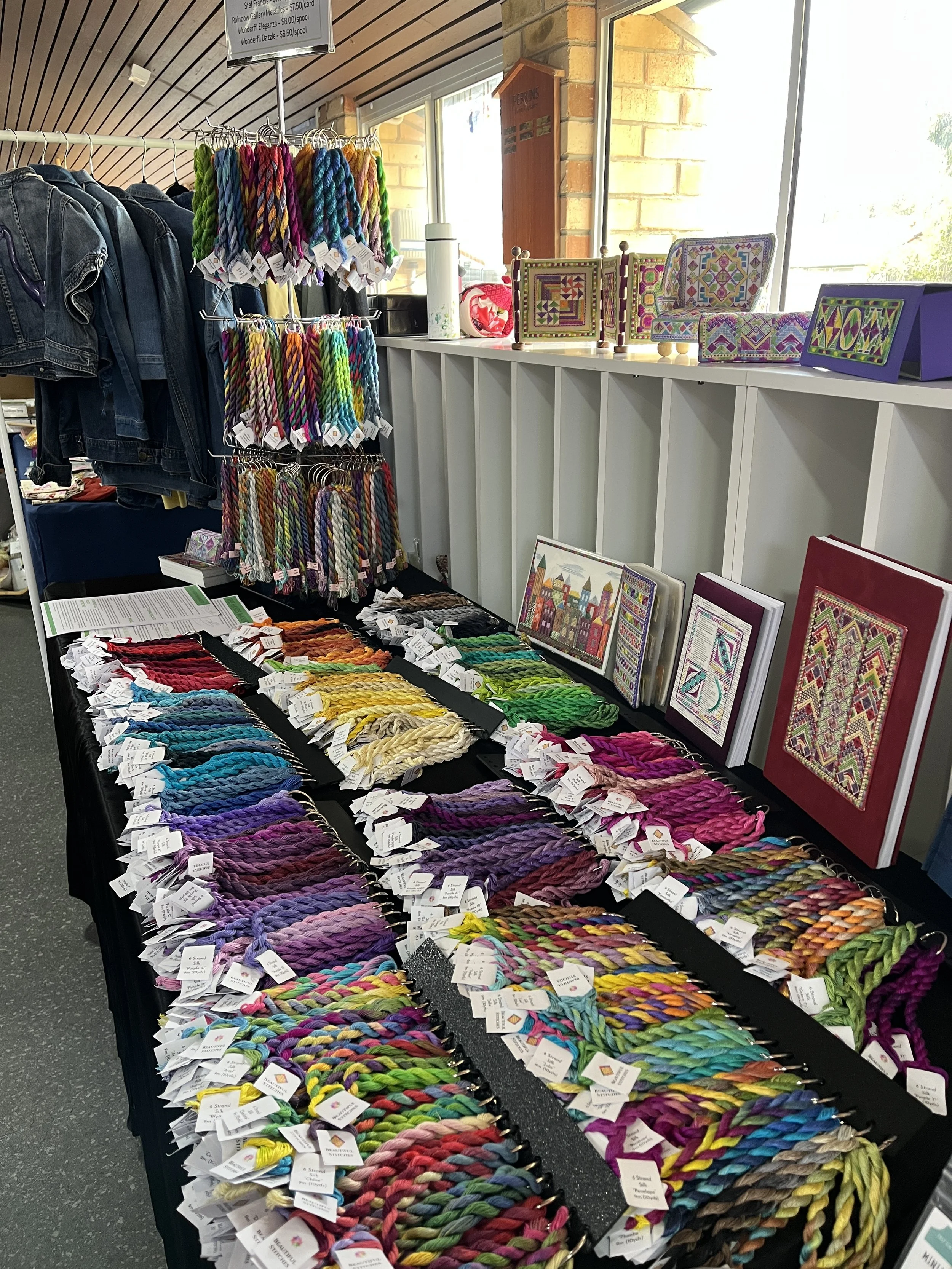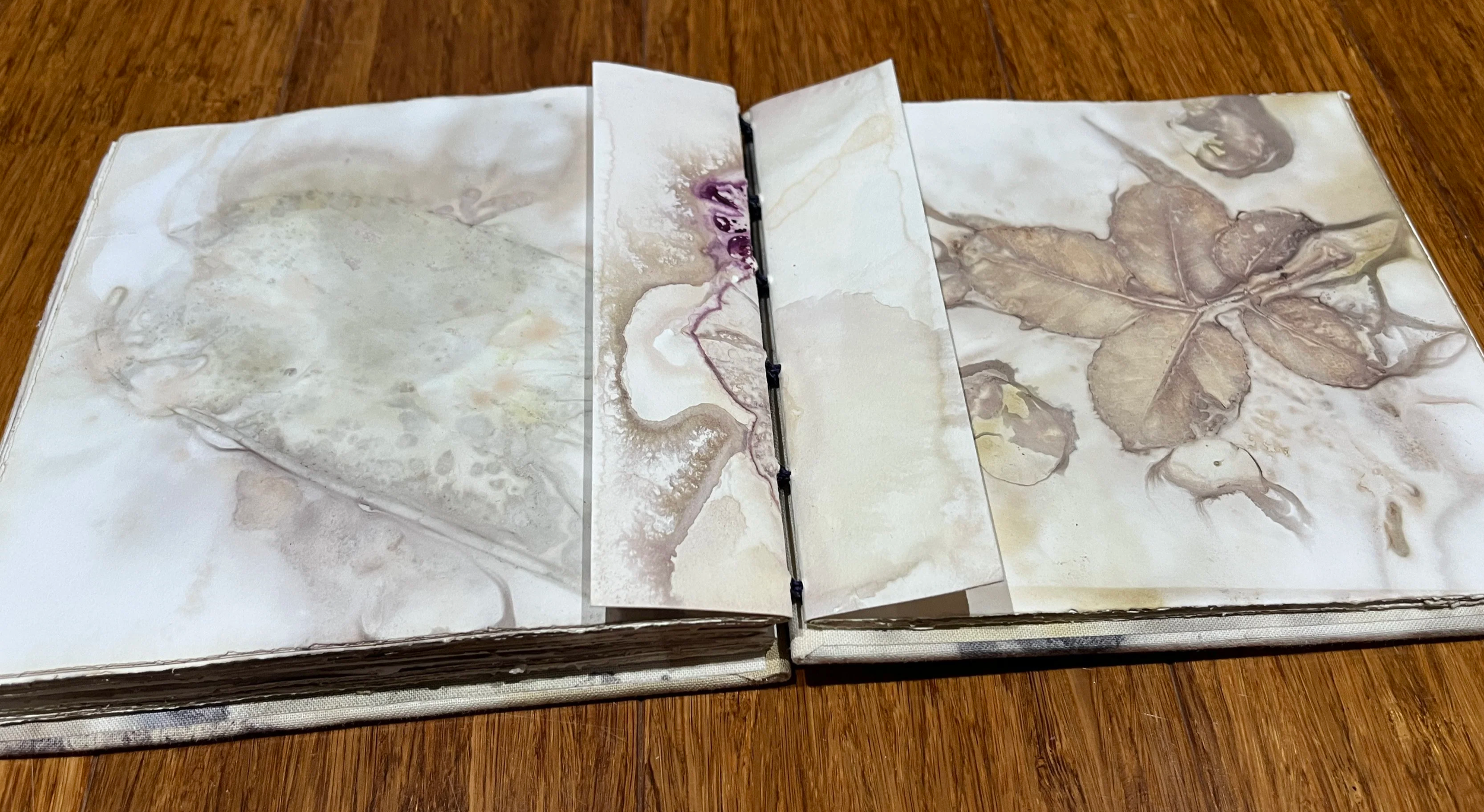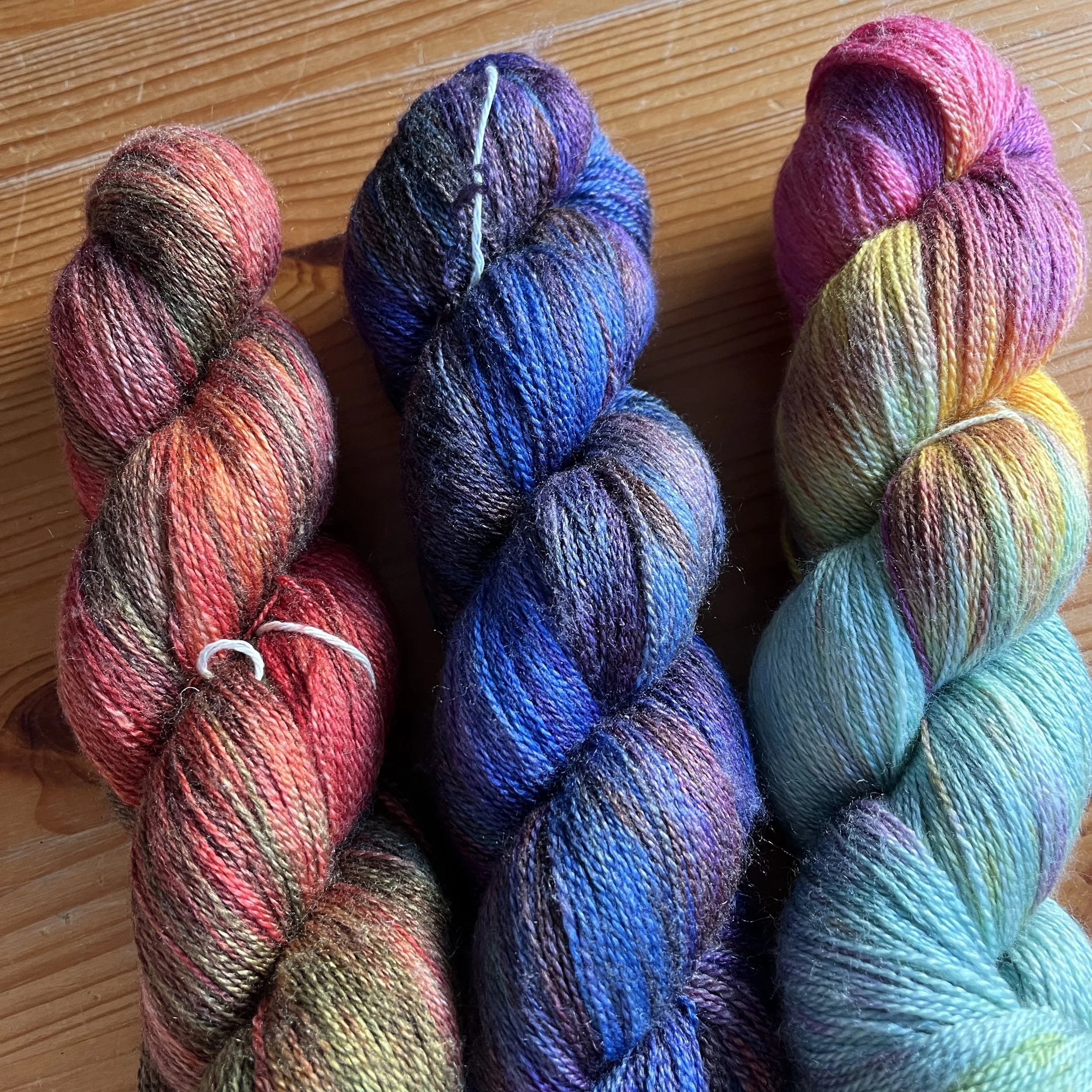The Feel of Things
When I was a child, one of my absolute most favourite things was the feel of Mum's homemade finger paints and play dough. Freshly made, the warm finger paint would coat my hands in an unctuous, glossy goo and glide effortlessly across the paper. Warm play dough was every bit as good - one of the most comforting sensations in the world. I don't recall being driven by a need to make a particular thing. I just loved the feel of rolling and moulding it in my hands. So of course, when I had my own kids, I got to do it all again - contentedly sitting alongside them as their small hands went through the same exploration of touch and feel that mine had decades earlier.
Given the tactile intensity of the "feeling" of this memory, it's funny that I didn't find myself drawn to pottery as my chosen creative medium! But I do experience that same sense of childlike joy and wonder when faced with a new array of textiles and fibres.
I was away at Fibres West 2025 last week, a biennial textile art event that brings together tutors and students for a week of in-depth, residential learning. I was there as a trader, my Beautiful Stitches stall set up for three days, filled with threads and embroidery tools. My fellow traders had baskets and racks overflowing with different types of fabric and fibre, some ready for dyeing and some displaying the most glorious colours. As a textile artist, it is literally impossible to walk past these without wanting to touch them. Your hands do it instinctively - reaching out to stroke a fibre, exploring the softness or texture; lifting a fabric to feel its weight; holding a skein of wool whilst you imagine the possibilities for its creative journey. It's so much fun! And as vendors, we know that an important part of our job with potential customers is giving them time to enjoy that playful process. I enthusiastically encourage people to feel the difference between a silk perle, a bouclé, and a chenille - to run the thread between their fingers and think about how those threads might lay on a base fabric and produce different textures. It's a fundamental part of the creative process, especially when you are likely to be working with the materials for hours or days or even years.
An array of my threads ready for visual and tactile exploration at Fibres West, October 2025
And of course, this is a key hallmark of all forms of craftsmanship. The ceramicist is drawn to the feel of different types of clay. Earthenware is coarser, leading to vessels with a more textured finish. Porcelain is much finer, yielding a smooth, silky surface. Some potters like to dig for their own clay, taking pleasure in the literal feel of the whole process starting from the rawest of materials. The same is true of woodworkers. Different trees yield different types of wood - hard with a tight grain, soft and less dense, straight grained or wavy, knotted or clean. All these characteristics become an intrinsic part of the maker's process as the wood responds to being shaped and worked. I could go on and on - just imagining all the different types of materials that we work with makes my fingers tingle.
But it's not just the makers who are drawn to the feel of things. Those who end up using or admiring them are engaged by touch too. Fibres West also hosted an evening where artists sold their work. I was immediately attracted by a table of beautiful handmade books by Dianne Strahan of Dize Designs. Every part of the books was botanically printed - the fabric covering the front and back boards, the paper that filled the pages, and the cord that had been used to stitch the binding. I am not especially interested in doing botanical printing myself, but I adored Dianne's finished product. I literally touched and held every book (there were about eight on the table) until I settled on the one I loved. The pressing of the leaves into the paper hasn't only left the most divine colours, but also a subtly embossed texture that makes each page unique and special.
I wish you could feel the textures in this beautiful, unique book created by Dianne Strahan
So what is going on here? What drives this need to feel things - to experience them by more than just looking? Is it especially important for makers, or are we simply the ones who were lucky enough to hang on to or rediscover those childhood impulses?
I believe the root of it all is curiosity. Children are naturally curious because it is the impulse that drives them to learn about the world around them. No matter how many times you tell them not to touch the stove because it is hot, their urge to touch and find out what "hot" actually means is ridiculously strong! This is an example of "diversive curiosity" - our desire for novelty and variety. It drives young children to literally drink in as many experiences as possible from the world around them, thereby building a vast store of knowledge that will help them to navigate through life. It is also the mechanism that has so many of us hooked on a myriad array of modern platforms that hijack our attention. As Ian Leslie writes in his book, "Curious", "diversive curiosity is essential to an exploring mind", but it can easily get stuck at the surficial level, simply skipping from one novel idea to the next.
To avoid that trap, we need "epistemic curiosity". This takes more effort than diversive curiosity, but it helps us to learn more about a topic and deepen our comprehension of it. It's that feeling you have when a topic catches your fancy and you just have to go searching for more about it - books, podcasts, blogs, experiences, etc. You want to know more, and then you want to synthesise that into a deeper understanding of the ideas that emerge from your research.
A third major form of curiosity is "empathic curiosity" - the desire to better understand the people around you. It's not the surficial knowledge of someone - their name or what they do for a living - but rather learning to comprehend what motivates them. Trying to understand how it would feel to live in their shoes deepens social connection, so it's an important part of what builds a community.
An online search about the types of curiosity will throw up a string of psychology articles, each with a particular slant on the topic, but they always have these three at their core - diversive, epistemic, and empathic. But all of them seemed to be missing one that was important to me. In my head, I was calling it dexterous curiosity - the notion that our hands have a very particular way of exploring the world and that this dexterity is also naturally directed towards exploration and information gathering. And then I came across the term "tactile curiosity" in this article. It mostly shows up in scientific literature related to children's learning - the finger paint and play dough of my childhood. But I think it is critical for our adult making experiences too.
Diversive curiosity in its tactile form is the reason that I found myself investigating every single trader's stall at Fibres West with my hands, repeatedly. And I was by no means the only one. You can't simply look at a length of fine gauze or a skein of alpaca yarn. You have to touch it! That's a joy that will never, never fade for me. But it's more than just that need to touch. It's also about the cornucopia of creative possibilities these fibres represented. I found myself drawn back to a basket of beautifully dyed merino silk yarn over and over again. The colours were glorious, but it was the texture that kept drawing me back. The fibre was so soft. It would be a joy to have in my stash for a while, occasionally taking it out to remind myself how much I love it (please tell me I am not the only one who sometimes just enjoys burying my hands in my stash!). And then will come the time when I settle on a design to make use of it, most probably a knitted scarf or shawl, and I will spend some weeks or months getting to know the feel of it much better. And then ultimately there will come the delicious experience of wearing it. By then, I will have gone well past the diversive curiosity stage. The feel of the yarn will have become familiar, but along the way I will have learned so much about how it behaves. Does it knit easily? How well does it hold tension? Does it have a tendency to fluff or pill? Epistemic curiosity will have taken over as I deepen my learning journey, even if it is only with a single skein of yarn.
Of course I had to buy this silk merino yarn. Yes - I succumbed to three!
What about empathic curiosity? Does that find expression in the tactile sense too? I think so, at least for me. One of the traders at Fibres West creates beautiful fabrics using natural dyes and the shibori technique. I could have simply purchased one of her glorious scarves but I was far more interested in learning more about her process, and in turn learning more about her. We have made plans to spend a day together, with me learning the basics of shibori and she in turn expanding her repertoire of embroidery stitches. Our curiosity about each other's maker processes, naturally leads to an interest in each other and our creative journeys.
I think tactile curiosity is particularly strong in makers. I watched almost 150 people at Fibres West completely absorbed by it. Without their deep and ongoing passion for the feel of textiles and the limitless ways they can be manipulated to create pattern and texture, the event would simply not exist. And I see that same connection to material in all the makers that I meet, regardless of their medium. But what about in the general population? And does it even matter?
Anni Albers in her seminal book "On Weaving" has a whole chapter devoted to "tactile sensibility". She argued that "we are apt to overcharge our gray matter with words and pictures…with material already transposed into a certain key…and to fall short in providing for a stimulus that may touch off our creative impulse". Those words were published in 1965. As a society, we are almost certainly further down that track of narrowed tactile experience now. We all know what a touch screen feels like, and some people get stuck there (thanks to diversive curiosity), observing pictures of different textures but never getting to actually feel them.
As a maker, I consider myself incredibly lucky to have escaped that narrowing. If anything, the sheer joy and wonder of tactile curiosity has grown as my creative experiences have developed and deepened. Whenever I work with my delicious silk threads, I reconnect with that childhood experience of silky, warm finger paint. It calms me, grounds me, and helps me navigate the difficult days with a little more ease. Last week I spent a few days with 150 people who would totally agree with me. So please, please, please make sure that the young people in your life get to exercise lots of diversive tactile curiosity (hopefully not the hot stove!), so that hopefully it's there as an anchor later in life when they might need it.
This Week’s References
Curious: The Desire to Know & Why Your future Depends On It by Ian Leslie, Quercus Editions Ltd, 2014.
On Weaving by Anni Albers, Studio Vista, 1965.
How to comment
I love receiving your comments and hearing your ideas! Making a comment is easy. Just type it into the box below. If you test it with “Preview” first, the name field will show “Not Logged In” (which is a system thing I can’t change). Never fear though! When you click on “Post Comment”, a dialogue box will come up asking for your Name, Email, and Website URL. The only field that must be completed is “Name”. It can be anything you choose - full name, first name, initials, nickname. So go ahead. Let me know what you think :)



